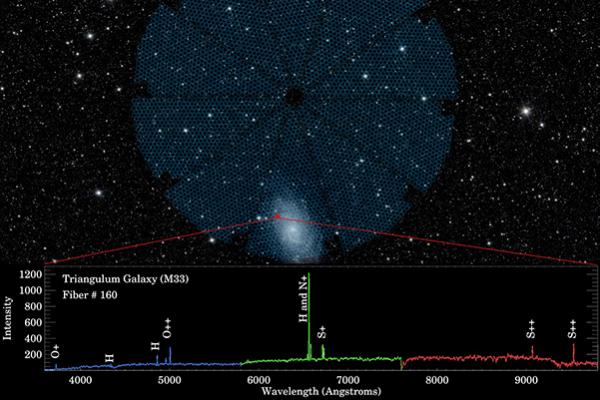
Large-scale Structure revealed by the Dark Energy Spectroscopic Instrument
The Dark Energy Spectroscopic Instrument (DESI) collaboration is less than a year into conducting a five-year survey that will measure redshifts for more than 30 million galaxies and quasars distributed across 14,000 square degrees of the sky. DESI uses these redshifts to construct large-scale structure (LSS) "catalogs" that detail the observed 3D structure and the volume it could have been observed in. The clustering statistics obtained from these LSS catalogs are then used to constrain both the co-moving distance to and the structure growth rate at the redshift of the galaxies, thereby providing geometric and dynamical tests of Dark Energy (and general cosmological) models. I will describe the process and motivation for producing these results, with an emphasis on the LSS catalog generation. I will also share some selected results obtained from the 10+ million redshifts DESI has already secured.
Speaker: Ashley Ross, The Ohio State University
Image Description and Credit: DESI spectrum and image of the Triangulum Galaxy, M33.
